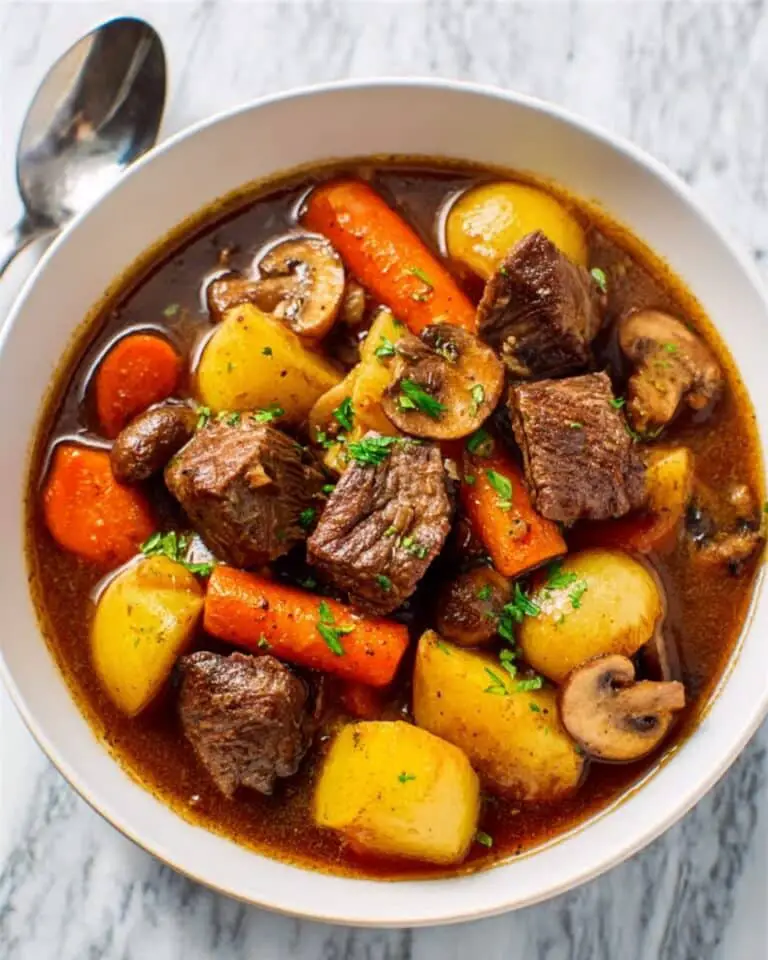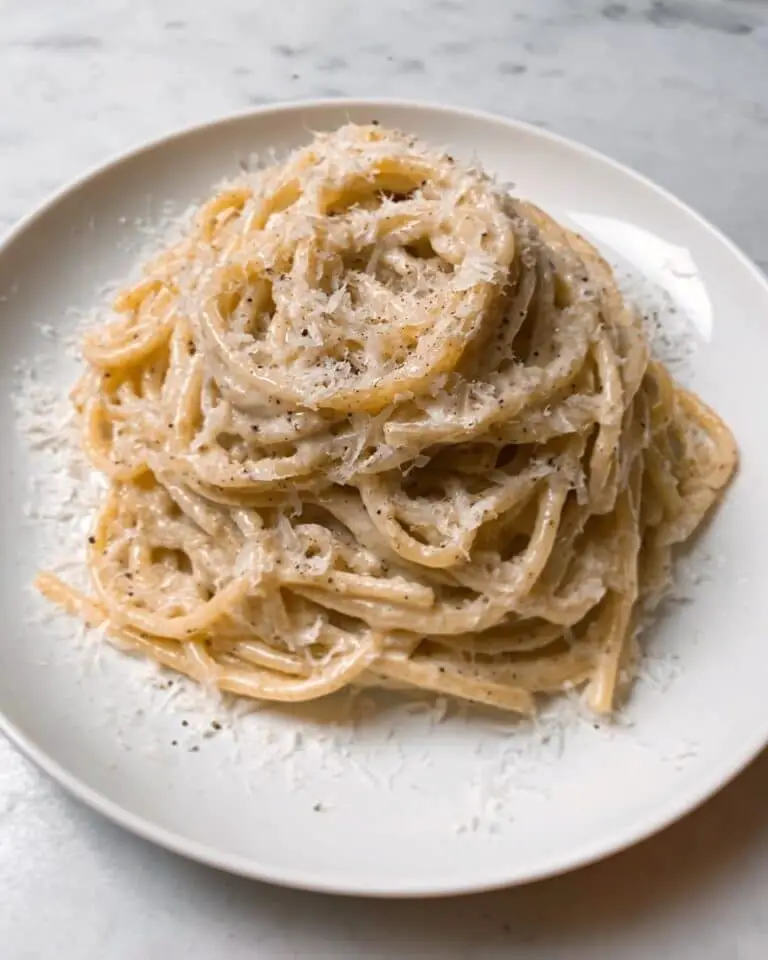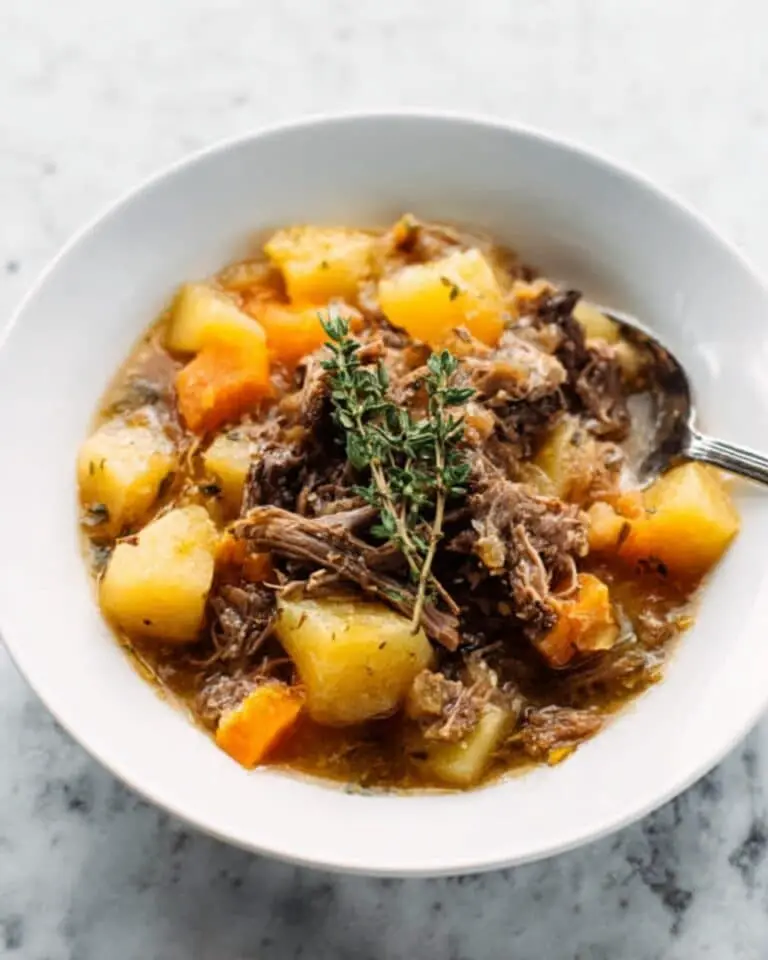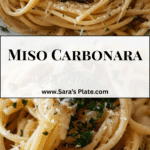Creamy, savory, and packed with umami, this Miso Carbonara is a bold and delicious take on the classic Italian pasta dish. By swapping traditional pancetta for smoky bacon and adding miso paste to the egg-and-cheese base, you create a fusion of Italian and Japanese flavors that feels both comforting and refreshingly new. It’s a pasta dish that hits all the right notes—salty, spicy, creamy, and rich, with just the right hint of heat.
Whether you’re a carbonara purist or just looking to try something new, this version is bound to become a repeat favorite.
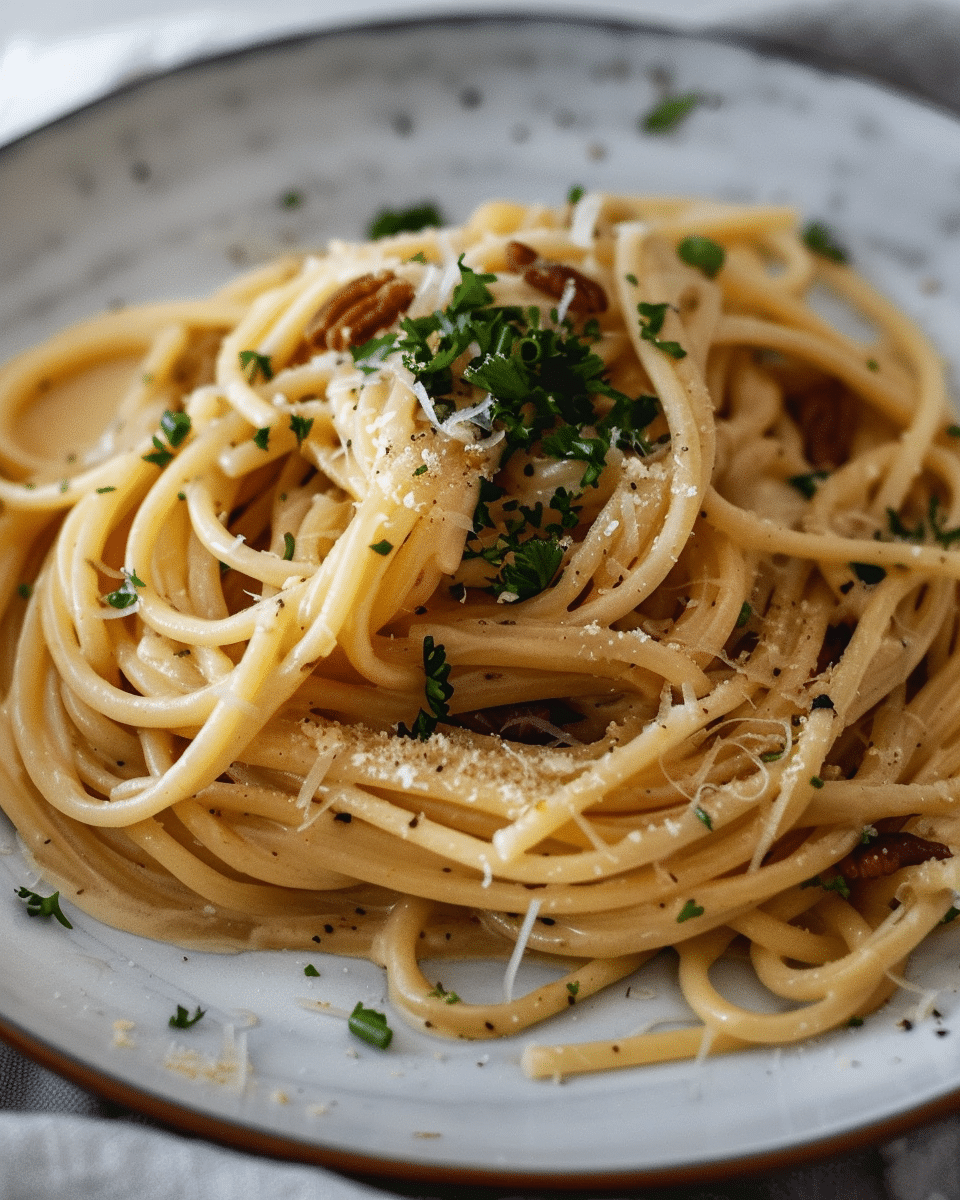
Why You’ll Love This Recipe
-
A fusion dish that combines Japanese and Italian flavors
-
Creamy texture without using any actual cream
-
Comes together in under 30 minutes
-
Bold, umami-rich miso enhances every bite
-
Just a handful of simple pantry ingredients
-
Feels both familiar and totally new
Tip: You can find a full list of ingredients and measurements in the recipe card below.
Ingredients
-
8 ounces spaghetti
-
1 tablespoon miso paste
-
1 teaspoon red chili flakes
-
1 teaspoon freshly ground black pepper
-
½ cup hot reserved pasta water
-
2 eggs
-
2 egg yolks
-
1 cup Parmigiano Reggiano cheese (plus more for garnish)
-
Finely chopped parsley, for garnish
Instructions
Cook the Pasta
Bring a large pot of salted water to a boil. Cook the spaghetti until al dente, according to the package instructions. Before draining, reserve 1 cup of the pasta water. Set aside ½ cup for the sauce.
Make the Sauce
In a mixing bowl, whisk together the miso paste, eggs, egg yolks, and Parmigiano Reggiano until smooth and creamy. Slowly drizzle in the hot reserved pasta water while whisking continuously to temper the eggs and create a silky sauce.
Prepare the Flavor Base
In a large skillet over medium heat, add 1 tablespoon of oil or leftover bacon fat (if using). Stir in the red chili flakes and black pepper. Immediately turn off the heat to bloom the spices without burning them.
Combine the Pasta
Add the cooked spaghetti to the skillet and toss well to coat with the seasoned oil.
Finish the Sauce
With the skillet still off the heat, pour the egg-miso mixture over the pasta. Stir quickly and continuously until the sauce thickens and clings to the noodles, forming a rich and glossy coating.
Serve
Plate the pasta and top with extra grated Parmigiano Reggiano and freshly chopped parsley. Serve immediately.
Variations
-
Vegetarian: Skip the bacon entirely and use a bit of butter or olive oil in the skillet
-
Extra Umami: Add a teaspoon of soy sauce or a few drops of fish sauce to the sauce
-
Less Heat: Omit or reduce chili flakes for a milder version
-
Add Protein: Stir in sautéed mushrooms or tofu cubes for more substance
-
Gluten-Free: Use gluten-free spaghetti and make sure your miso is gluten-free
Heating and Storage
Storage
Store leftovers in an airtight container in the refrigerator for up to 2 days.
Reheating
Reheat gently in a pan over low heat with a splash of water or broth to loosen the sauce. Avoid microwaving, which can overcook the eggs in the sauce.
Freezing
Not recommended, as the egg-based sauce does not freeze well and may split upon reheating.
Frequently Asked Questions
Can I use white or red miso paste?
Yes, white miso (shiro) will give a lighter, slightly sweet flavor, while red miso (aka) adds a deeper, more intense umami punch.
Can I use another type of pasta?
Absolutely! Linguine, fettuccine, or bucatini work well.
Is this spicy?
It has a mild heat from the chili flakes, but you can adjust the amount to your liking.
Can I add bacon back to the recipe?
Yes, although this version excludes it, crispy bacon or pancetta can be added for a heartier, traditional feel.
How do I avoid scrambling the eggs?
Make sure the skillet is off the heat when adding the sauce, and stir continuously to temper the eggs gently.
Is this dish vegetarian?
Without the bacon and with vegetarian-friendly cheese and miso, yes!
Can I make this dairy-free?
Swap Parmesan with a dairy-free cheese alternative, but note the texture and flavor may change slightly.
What kind of miso is best?
White miso is most commonly used for its mild flavor, but red miso works if you like deeper intensity.
What can I use instead of parsley?
Chopped basil, chives, or even green onions are good alternatives.
Can I make it ahead?
It’s best served fresh, but you can prep the sauce ahead and store it chilled until you cook the pasta.
Conclusion
Miso Carbonara is a delicious twist on a beloved classic that brings a global flavor profile to your dinner table. It’s fast, flavorful, and just a little unexpected—perfect for date nights, cozy evenings, or when you just want to impress yourself with something special. The creamy miso sauce clinging to al dente spaghetti, paired with a punch of chili and pepper, makes this dish a standout in your pasta repertoire.
Print
Miso Carbonara: A Flavor-Packed Twist on a Classic
- Total Time: 25 minutes
- Yield: 2 servings
- Diet: Vegetarian
Description
This miso carbonara is a bold twist on a classic Italian dish, blending creamy miso-egg sauce with chili, Parmesan, and al dente spaghetti. No bacon needed, just pure umami.
Ingredients
8 oz spaghetti
1 tbsp miso paste
1 tsp red chili flakes
1 tsp black pepper
½ cup hot reserved pasta water
2 eggs
2 egg yolks
1 cup Parmigiano Reggiano cheese (plus more to garnish)
Chopped parsley (for garnish)
Instructions
-
Boil Pasta
Cook spaghetti until al dente. Reserve 1 cup of pasta water and drain. -
Mix Sauce
In a bowl, whisk miso paste, eggs, yolks, and cheese. Slowly add ½ cup hot pasta water while whisking. -
Flavor Base
In a skillet, add 1 tbsp oil. Stir in chili flakes and black pepper. Turn off heat. -
Combine Pasta
Add pasta to skillet. Toss to coat with spices. -
Add Sauce
Off the heat, pour in egg-miso mixture. Stir constantly until creamy. -
Serve
Garnish with more cheese and parsley. Serve immediately.
Notes
- White miso gives a subtle flavor; red miso adds more depth
- Keep heat off while mixing sauce to prevent curdling
- Add mushrooms for extra umami
- Prep Time: 10 minutes
- Cook Time: 15 minutes
- Category: pasta
- Method: Stovetop
- Cuisine: Fusion (Italian-Japanese)



